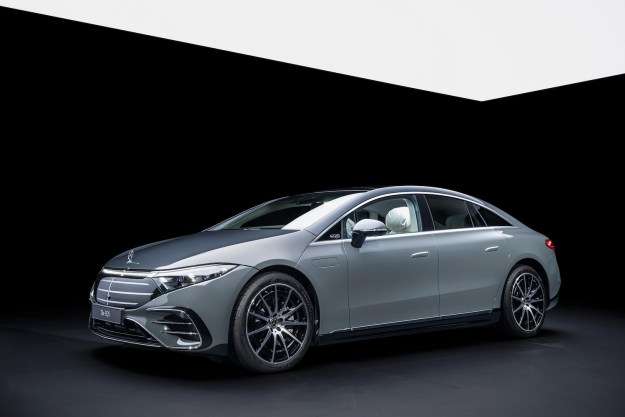The 2015 Subaru Legacy was unveiled today at the Chicago Auto Show, and you could almost hear the entirety of New England exhale a collective “yay.”
Like recent Subaru redesigns, the Legacy stays on the conservative side with updated styling, a few new pieces of technology, and mostly carryover mechanical bits.
That revised styling has been one of the most-anticipated aspects of the new car since Subaru unveiled its striking 2015 Legacy concept last fall at the 2013 Los Angeles Auto Show.
The production car has very little in common with that concept, which isn’t too surprising. The concept’s low roofline and minimal headlights probably wouldn’t have been production-feasible.
This isn’t the first time Subaru has done this. It showed a similarly-spectacular WRX concept at the 2013 New York Auto Show, when all along the production WRX was still based on the Impreza.
In a similar vein, the 2015 Legacy that people will actually get to buy wears an evolutionary version of the previous car’s styling. The most noticeable difference is up front, where slimmer headlights and an upright, shield-like grille make this Subaru look a bit like a Ford Taurus.
The rest of the car looks better, though. The roofline has the same rounded shape as the previous car, but it’s noticeably lower. Designers also removed some visual bulk by adding creases along the sides, and they ditched the controversial flared wheel arches, giving the 2015 model a cleaner look.
The interior design is pretty clean, too. The dual-dial gauge cluster with integrated LCD display adds a touch of sportiness, and there’s an optional center-stack navigation and infotainment screen.
For 2015, Subaru also equipped the Legacy with an updated version of its EyeSight safety system. EyeSight uses cameras – rather than the radar employed in most other systems – for automated cruise control and braking. Other safety features include Blind Spot Detection, Lane Change Assist, and Rear Cross Traffic Alert.
The Legacy can also turn on one fog lamp during cornering, improving visibility without blinding oncoming drivers.
Subaru fans will find the powertrain offerings familiar. The base engine is a carryover 2.5-liter boxer-four, with 175 horsepower and 174 pound-feet of torque. There’s also a 3.6-liter boxer-six, which produces 256 hp and 246 lb-ft. Both engines come with Subaru’s Lineartronic CVT.
The 2015 Subaru Legacy goes on sale this summer. Expect to see a redesigned Outback based on this model soon. We’d love to eventually see a performance-oriented Legacy GT as well.


